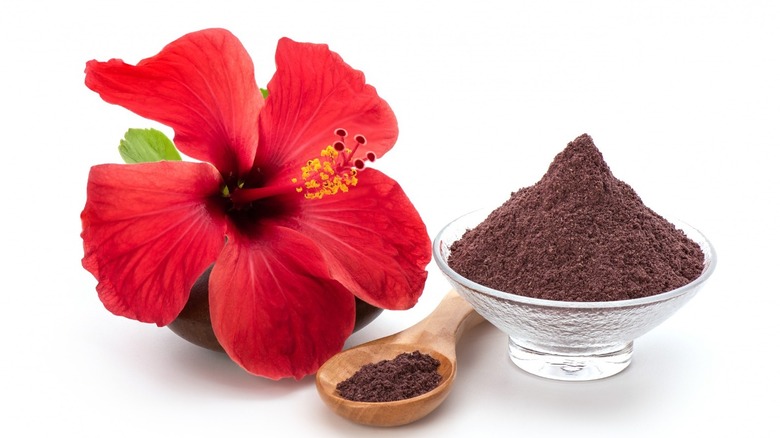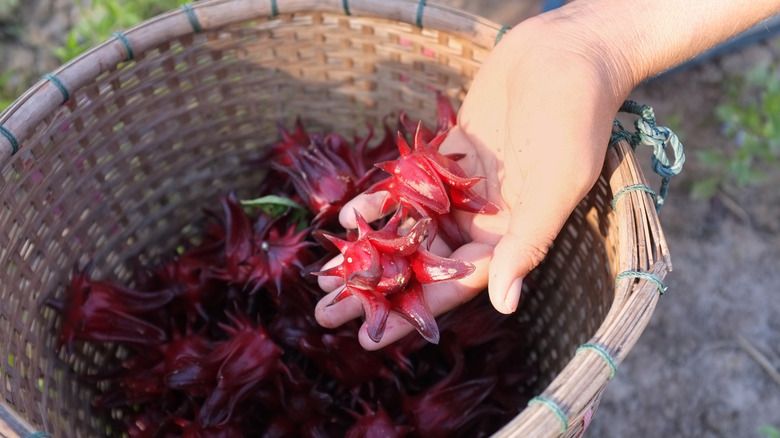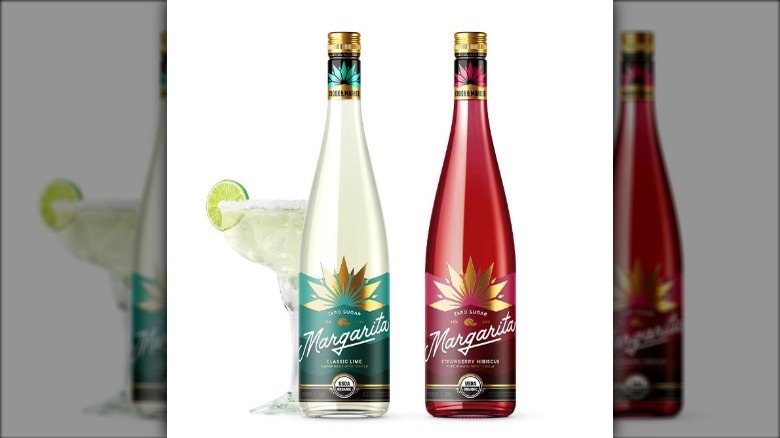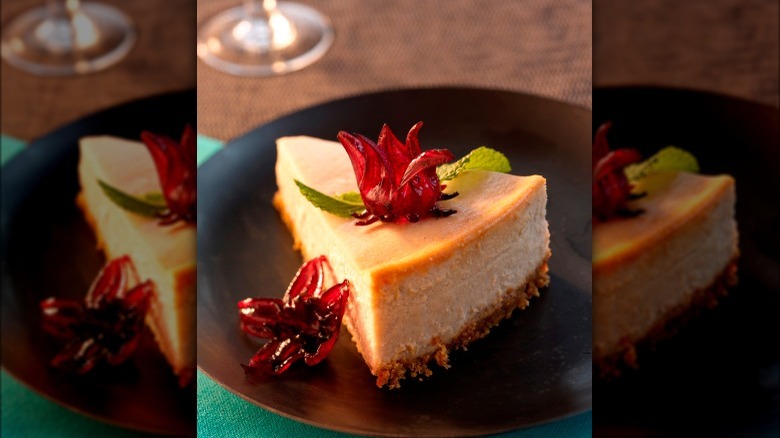Why Hibiscus Is Already The Hottest Flavor Trend Of 2022
When it comes to flavor, Mashed is all about innovation and for 2022 we're watching the rise of hibiscus. The New York Times expects the popularity of this flower and flavoring to continue to increase based on its, "crimson hue and tart, earthy flavor," and the ability to add this ingredient to "everything from cocktails and sodas to crudos and yogurt." Both flavorful and vibrantly colored, look for new hibiscus innovations throughout your favorite food and drink industries this year.
Researchers for the 2022 Food and Beverage Flavor Trends report also rate hibiscus as a flavor on the rise, experiencing a 24% increase on menu listings from the second fiscal quarter in 2018 to the same time in 2021. Hibiscus is listed as a top non-alcohol flavor along with cardamom and hojicha tea, and is described as "an opportunity for operators to showcase brightly colored and unique teas and cocktails." When it comes to alcohol, trend forecasters look for hibiscus to grow alongside guava and elderflower in both liqueurs and seltzers. Meanwhile, there's much to learn about this edible plant.
How to eat and drink hibiscus
Hibiscus packs a powerful punch, both of tart flavor and vibrant red color. According to Prepared Cooks, it can be eaten fresh but is typically dried and has mildly fruity and floral notes. Edible hibiscus is sometimes also referred to as sorrel or roselle, but the proper name for the plant is "Hibiscus sabdariffa var. sabdariffa race ruber" according to experts at Martha Stewart.
The specific part of the plant we eat is called the calyx, which is actually the structural part that sort of holds the petals together and more closely resembles red okra than a floral arrangement. Hibiscus has been widely used throughout both Chinese and Ayurvedic medicine, as well as throughout Africa, and is even said to have been a fever reducer in ancient Egypt, according to Eat The Planet.
The increased willingness of modern Americans to embrace otherwise lesser-known flavors also adds a cultural depth and narrative that many will appreciate. As shared by Sorel liqueur, West African hibiscus traveled across the ocean to the Antilles, becoming known as sorrel in centuries past. In one triumphant example, this "heritage through spice" was brought to Brooklyn via Jackie Summers, who became the first "Black person in America with a license to make liquor" by sharing his family's Barbadian flavors with new audiences in the U.S.
Hibiscus cocktails, mocktails, and drinks
There are many different ways to enjoy the flavor of hibiscus in a beverage. Sorel liqueur seeks to highlight the hibiscus in their bottles using an array of flavors such as Moroccan hibiscus, Brazilian clove, Indonesian cassia, and Nigerian ginger. JAJA (a tequila maker pronounced "haha") teamed up with band The Chainsmokers on a margarita collaboration featuring a fusion of hibiscus iced tea and JAJA Anejo with club soda and a blood orange garnish.
Dr. Brew announced a new kombucha flavor that mixes "elderflower, chamomile, hibiscus, and rose petals." Another alcohol-free drink is the pomegranate hibiscus flavor by Recess, which adds health-minded "powerful compounds," including hemp, ginseng, and L-theanine for relaxation. For a DIY taste, food creator Joy Bauer even concocted a hibiscus-matcha mocktail recipe featuring Hi-Biscus LaCroix.
In her Netflix limited series "The Woman in the House Across the Street From the Girl in the Window," Kristen Bell can be seen drinking "wine" that was actually hibiscus tea for filming purposes, per E! Online. Meanwhile, Life of Cha notes that hibiscus tea will taste different depending on which the particular cultural preparation, with certain versions being sweeter, tarter, or spicier as varied across Chinese, African, Caribbean, or European styles. Preferences for sipping on hibiscus drinks hot or cold can also vary.
The hibiscus edibles you need for 2022
Hibiscus is not just enjoyed in beverages, but also consumed as a food, and many of the edible preparations you see will be in the form of a jam or jelly, as shared by Bon Appétit. Some suggested preparations include "candying" the calyxs (boiling with sugar and spices such as ginger or clove), using in stir frys or sauces, tossing fresh hibiscus in salad, simmering with greens, or even creating a puree. Australia's Wild Hibiscus Flower Co. specializes in preserving whole hibscus flowers (calyxs) in syrup, which can make a vibrant yet simple garnish for desserts — such as atop cheesecake.
Forbes shares how Nigerian-born food stylist and writer Yewande Komolafe helped intrigue New York Times readers with Hibiscus-Spiraled Ginger Cookies. For savory dishes, Forbes suggests a hibiscus chicken or a garlic salmon with sorrel leaves and highlights the work of Nigerian chef Lopè Ariyo in her cookbook, appropriately titled "Hibiscus." FONA International notes many different uses of this plant on menus, including hibscus flower enchiladas and a chicken al pastor with "hibiscus and chipotle tinga."
FONA researchers note that from 2014 to 2019, North American eaters accounted for 12% of worldwide "hibiscus flavored new product introductions," and they expect that trend to continue to rise. So what are you waiting for? Give hibiscus a try.



